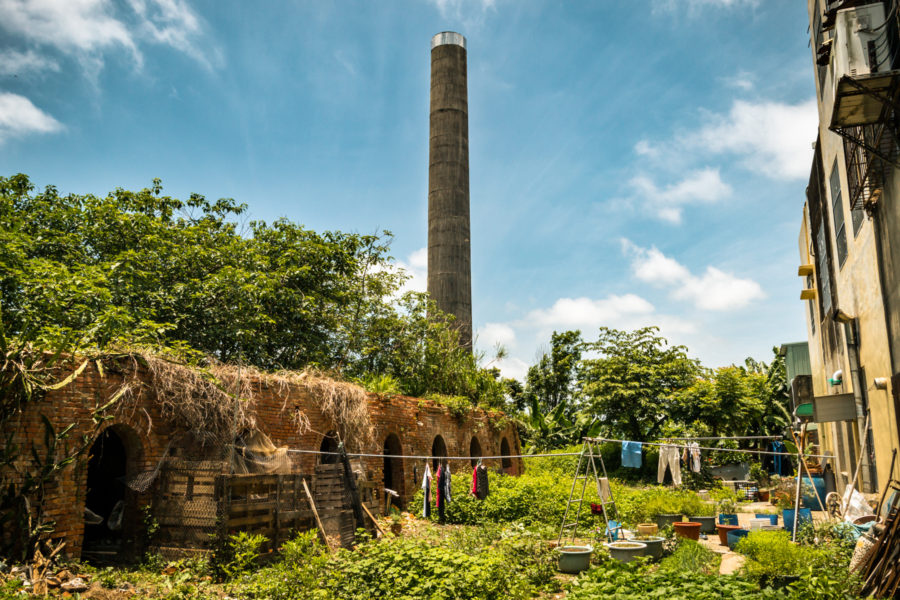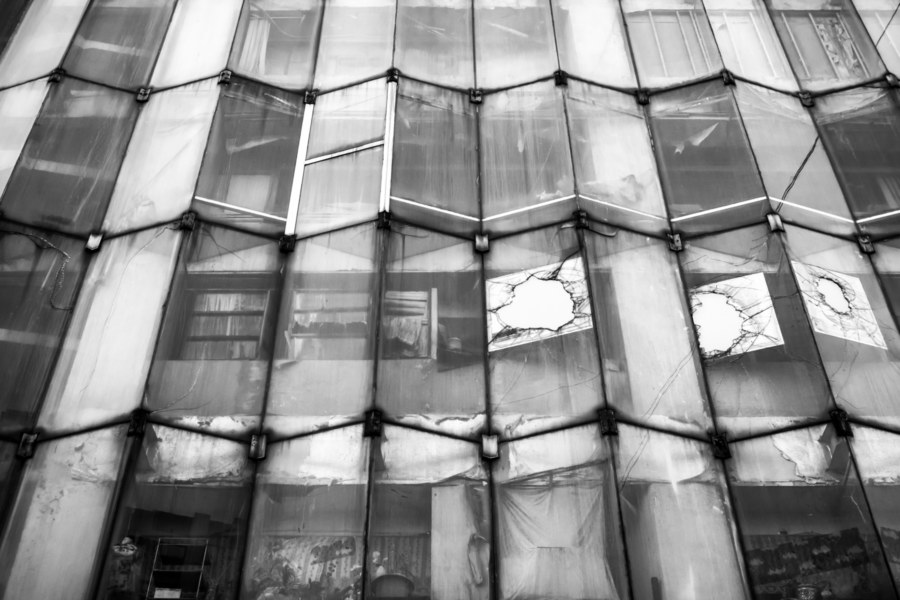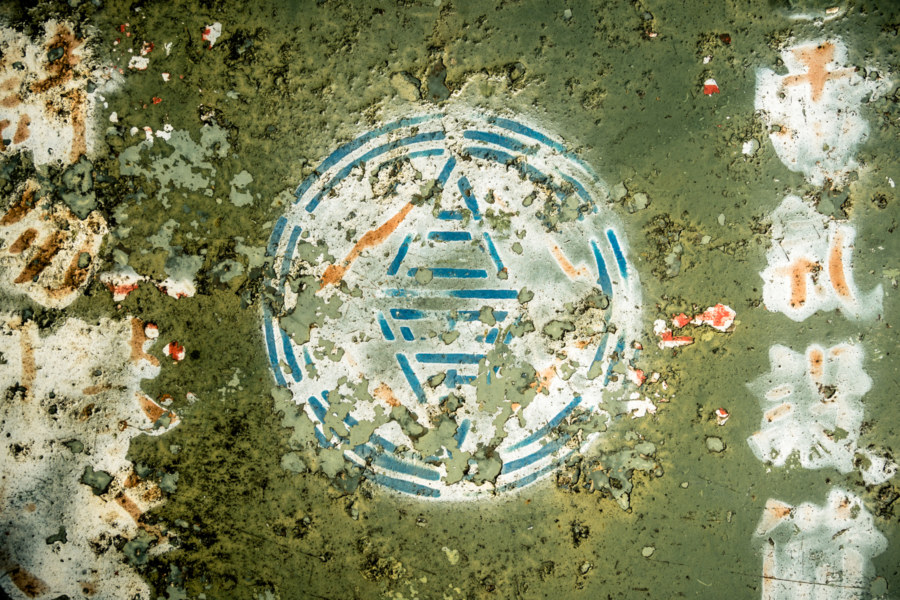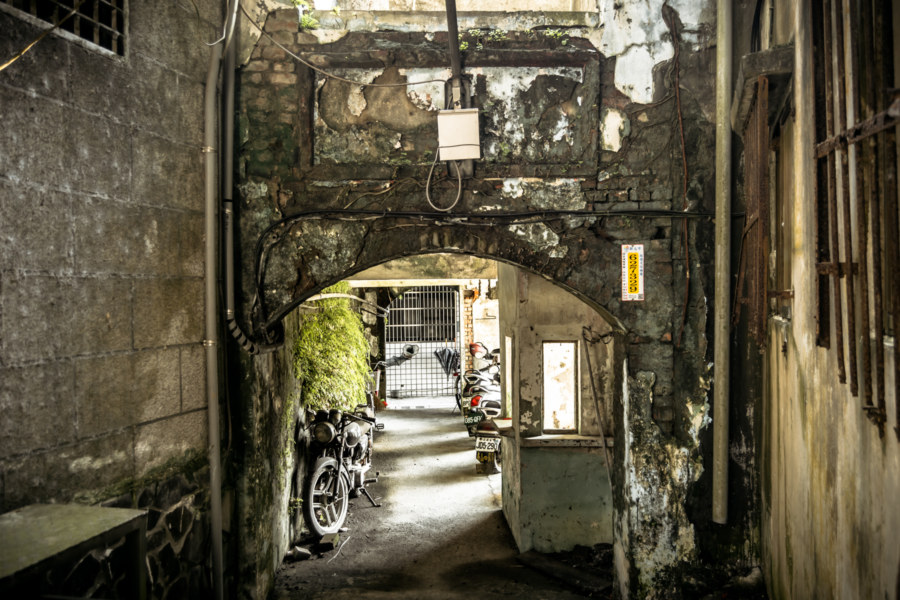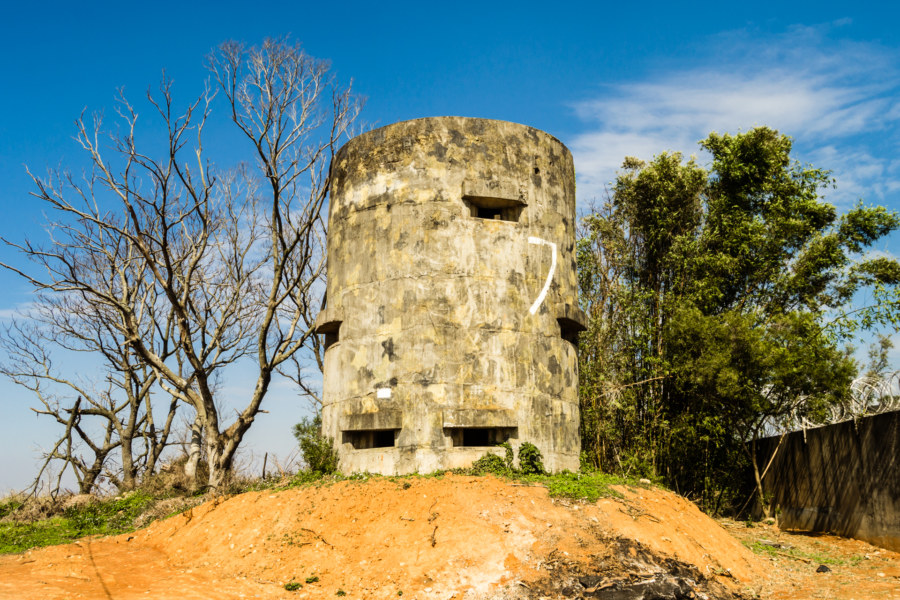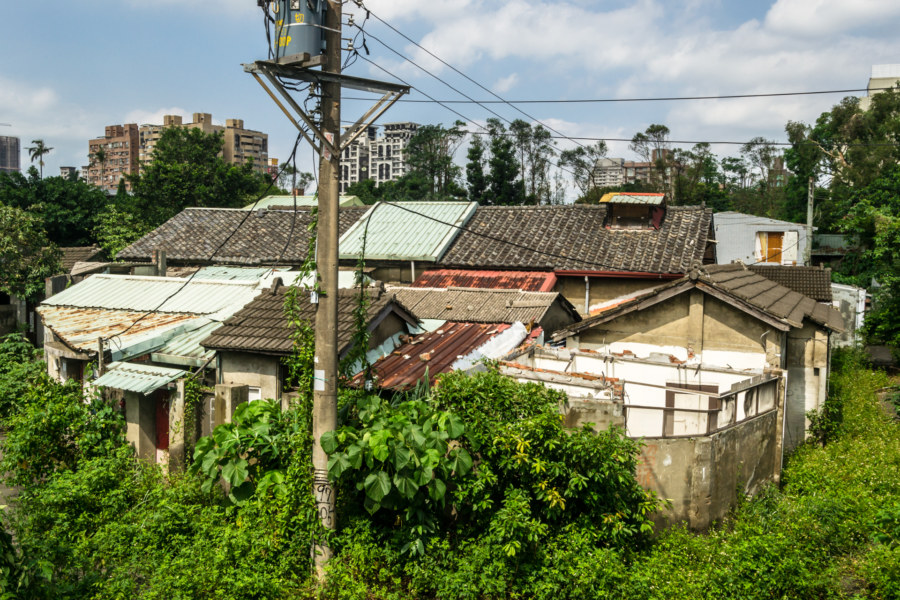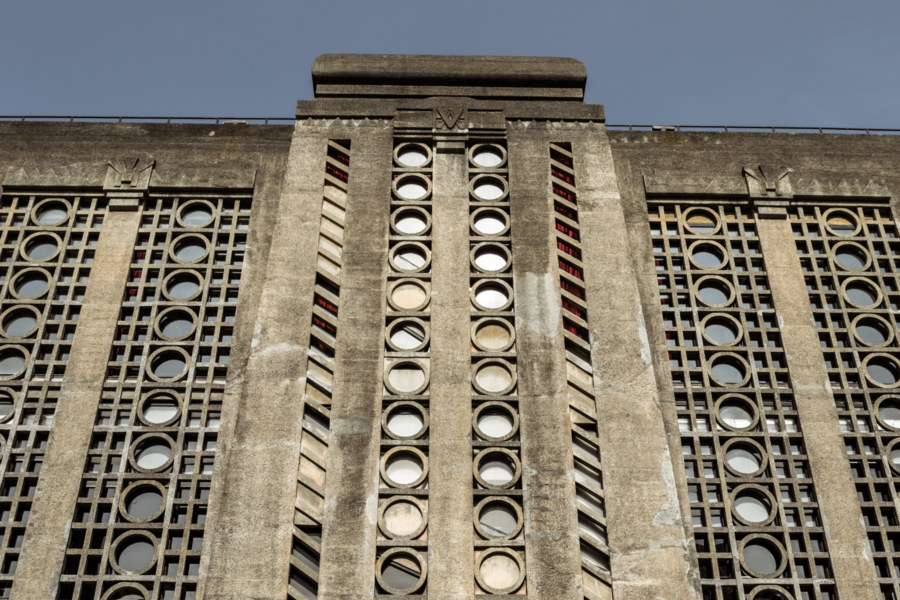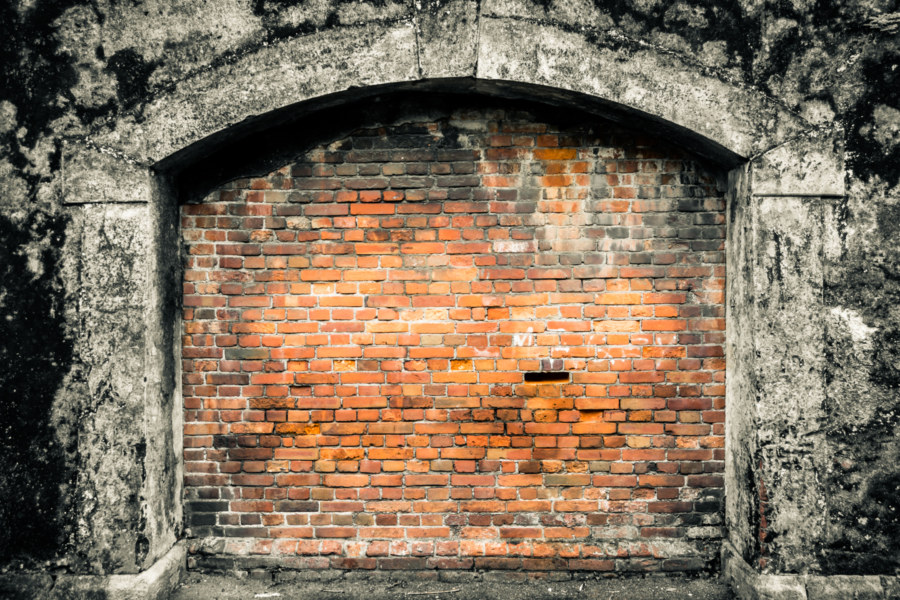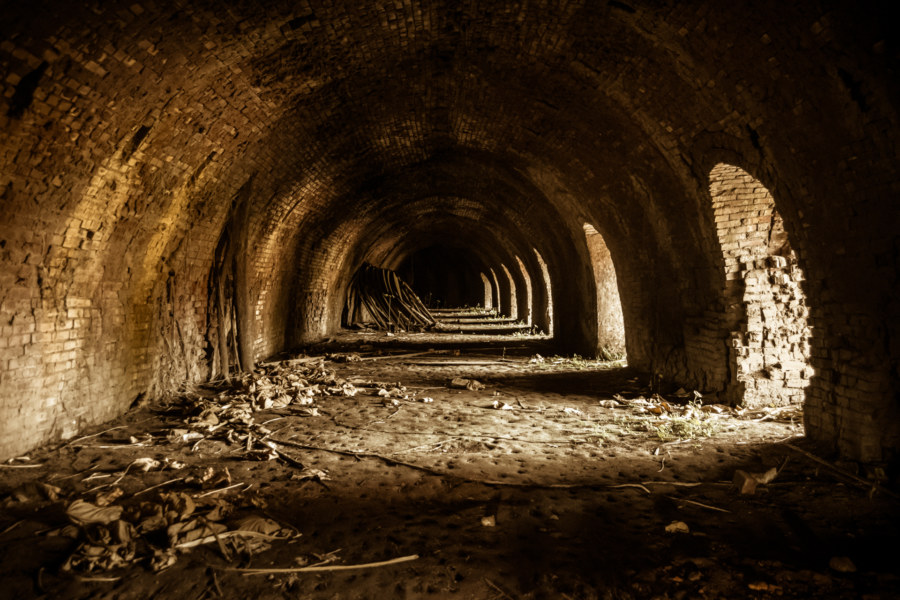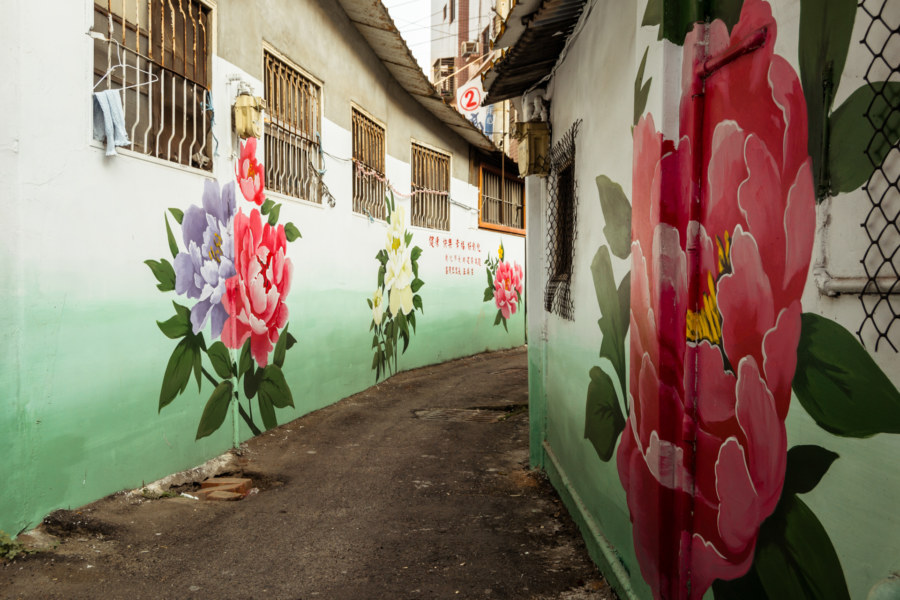Liùjiǎo Brick Kiln 六腳磚窯 was an unexpected discovery while riding from Beigang to Puzi earlier this summer. The chimney is plainly visible from the roadside and the crumbling bulk of the kiln can be discerned in a gap between the row of houses out front. Stopping to take a closer look I went around (and through) the old kiln to document what remains. Liujiao is a rather obscure part of rural Chiayi so I’ve not found any mention of this place online apart from this brief post. Whereas several kilns in various other parts of Taiwan are being preserved this obscure ruin is almost certainly never going to be the object of a conservation effort.
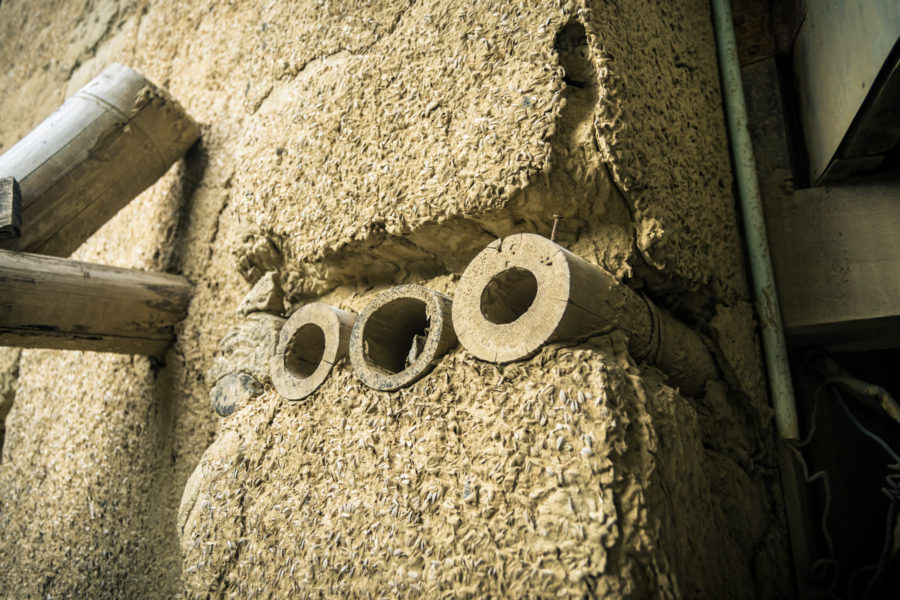
A means of organizing content around building material.
Adjacent Terms
Zhongwai Department Store 中外百貨
Today I went to investigate reports of an abandoned building on the edge of Xīméndīng (西門町), a busy commercial district in central Taipei. It is fairly well-known due to its central location but I could find no easy means of entry for the very same reasons. From this television news report it sounds as if this was originally the Zhōngwài Department Store Company (中外百貨公司) and later the Yángyáng Department Store (洋洋百貨). While it isn’t surprising to find such ruins around much of Taiwan it is somewhat unusual to see in such a prosperous area. The building is for rent, as I understand it, and much of the aforementioned report seems concerned with the outrageous price tag for such a decaying monstrosity.
Transformed by Time
Yesterday I went on a short tour of Linkou inspired by the opening of the Taoyuan Airport MRT and the proliferation of YouBike stations to the exurbs of Taipei. After spending some time under the sun I stopped to pick up some water at one of Taiwan’s ubiquitous convenience stores and noticed a weathered padmount transformer out front, pictured here.
Shuangxi Donghe Theater 雙溪東和戲院
Dōnghé Theater 東和戲院 is an obscure ruin in Shuangxi, a former mining town of approximately 8,000 residents in the mountains of eastern New Taipei. Despite its diminutive size and relatively remote location, Shuangxi has a colorful history extending back to the late Qing dynasty era. Its prime location at the confluence of Mudan Creek and the eponymous Shuang River made it an ideal transshipment point for people and goods traveling to and from Ruifang. The surrounding hills also contained rich deposits of gold and coal deposits, sparking a mining boom that peaked in the mid-20th century with dozens of mines and more than 30,000 miners in the area. Two theaters were in business in the 1950s, but the local entertainment industries declined along with the mining industry, and only the ruins of Donghe Theater remain to provide a glimpse into the past. Although it isn’t formally protected, the site has been tidied up and anyone is welcome to wander in and take a look.
Dadu Plateau Anti-Airborne Fortifications 大肚台地反空降堡
Dàdù Plateau (大肚台地) is a geographic feature of great strategic importance to the defense of central Taiwan. It overlooks the Qīngshuǐ Coastal Plain (清水平原) and occupies high ground on the far edge of the Taichung Basin (台中盆地), home to the majority of the population of Taichung, the third most populous metropolitan area in the nation. The entire length of the plateau is peppered with military facilities from the massive Ching Chuan Kang Air Base (空軍清泉崗基地) in the north to Chénggōng Ridge (成功嶺) down south. In between one will find a number of abandoned or disused bunkers, gun towers, and blockhouses. This post focuses on seven anti-airborne fortifications located in the central part of the plateau starting with the #7 Anti-Airborne Fort (七號反空降堡), my introduction to this cluster of ruins.
Jiahe New Village 嘉禾新村
Jiahe New Village (嘉禾新村) is one of more than 800 military dependents’ villages (Chinese: juàncūn 眷村) built in Taiwan in the late 1940s and 1950s to provide provisional housing for KMT soldiers and their families fleeing from the Chinese Civil War. Approximately two million people crossed the Taiwan Strait from China from 1945 to 1949, bolstering an existing population of approximately seven million. More than 600,000 of these Chinese immigrants ended up in military villages like this one in Zhongzheng, Taipei, which was forcibly abandoned only a couple of years ago as part of a wave of urban renewal projects sweeping the nation.
1933 Shanghai: Art Deco Abattoir
Gathered here are several photographs from a brief walk around 1933 Shanghai (上海1933老场坊), an unusual slaughterhouse in Hongkou, part of the former Shanghai International Settlement. Designed by a British architect in an arguably Art Deco style and built with imported cement in 1933, it was recently renovated and transformed into a hub for the creative industries. Seeing as how this is Shanghai, several high-quality English language articles have already been published about it, so I will hereby refer you to Atlas Obscura, Shanghai Art Deco, Mas Context, Randomwire, and La Casa Park for more information and informed analysis.
The Remains of Taipei Prison 臺北監獄圍牆遺蹟
Not much remains of the old Taipei Prison (台北刑務所) except the walls along the north and south sides of the prison grounds. Originally known as Taihoku Prison (after the Japanese name for Taipei), it was built in 1904 to incarcerate a burgeoning population of political dissidents, revolutionaries, and activists resisting Japanese colonial rule, though the authorities also imprisoned common criminals here as well. It was also the scene of the needless execution of 14 American soldiers a mere 58 days before the end of World War II. The KMT continued to operate the prison into the bleak years of the White Terror (白色恐怖) before razing it to the ground in 1963.
Jinshuncheng Hoffmann Kiln 金順成八卦窯
Jīnshùnchéng Hoffmann Kiln 金順成八卦窯 is located on the eastern Changhua Plain 彰化平原 in Huatan, a rural township south of Changhua City. During the Japanese colonial era this part of Taiwan specialized in brick and ceramic production due to plentiful supplies of high-quality clay, and the industry continued to expand after the arrival of the KMT. This particular kiln only dates back to the early 1960s and is the last of its kind in Changhua. For that reason the county government designated it a historic building in 2010 but very little has been done to clean the site and make it inviting to visitors.
Postcards From Changhua City 1 彰化市明信片一號
I moved to Changhua City in November 2014 to see what it’s like living in a traditional town in central Taiwan. I had an interesting time staying in Tainan for three months earlier that year so I figured why not give Changhua a shot for the wintertime? Changhua is nowhere near as lively and interesting as Taiwan’s old southern capital but it is not without charm. Here I have gathered up some of the more representative images I captured during my first two months of residency, mostly of the area immediately to the east of the train station, which also happens to be the oldest part of town. Explanations are given in the caption of each photo, where available.
